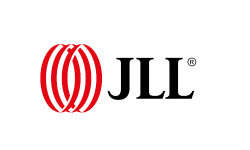- Executive Note
- Editorial note
- Interviews
- Green transformation
- Green Blog
- Events Coverage
Changing the colours of real-estate investment from brown to green
JLL | Dec 6, 2023, 09:57

By Jakub Frejlich, director, Strategy Consulting, JLL

The real-estate sector remains in the spotlight of ongoing and ever-evolving global discourse regarding the sustainable future of business and the worldwide economy. One point is clear and non-negotiable: there is no green future without a green built environment.
Buildings significantly contribute to the world energy consumption and carbon footprint. In the EU, the sector accounts for 40% of energy consumption and 36% of GHG emissions. The scale of the challenge puts pressure on market participants, but also creates chances for leaders of change. It plays a vital role in helping building users, communities, and society at large achieve their environmental objectives. And as the opportunities arise, driven by new narratives and legislative actions, capital, motivated by the perspective of enhanced and resilient returns, finds its ways to facilitate a transition towards a sustainable future.
Rising dichotomy and two-way value creation
The distinctions in quantifiable characteristics, such as value and investment performance, between assets that are considered green and those that are not are often referred to as ‘green premia’ or ‘brown discounts’. As the market matures and standards evolve, a lack of sustainable solutions lead to value deterioration – the so called ‘brown discount’. The average rent premium for green properties ranges from 5-15%, while the estimated capital value premium, measured as a price premium on a transaction, is between 5-25%.
Sustainable building solutions increase occupancy and tenant retention, while lowering operating expenses and capitalisation rates but also decrease risk in numerous ways. Green(ed) investments are more resilient to both physical and transition risk, consequently lowering exposure to threat-imposing factors such insurance premia, carbon pricing and valuation risk.
Brown to green
Investors seeking sustainable returns and portfolio resilience have options beyond just erecting new green buildings. A significant part of the responsible real estate investments involves renovating and retrofitting existing structures, a strategy known as ‘brown-to-green’. This approach refers to transformation of buildings with low environmental performance into energy-efficient and well-positioned structures. Renovations are crucial to meet expanding market demand for green buildings and this method is growing more feasible and appealing due to a mix of technological progress, financial inducements and changing regulatory directives. Moreover, the increasing demand for highly rated buildings will likely result in establishing the yield compression and valuation divergence between brown and green assets, further fostering the attractiveness of this approach both from short and long-term investors perspective. Recent data confirms this trend, as 85% of market participants expect an increase in brown-to-green development and 66% are anticipating growing capital expenditures on refurbishment.
But the brown-to-green approach in sustainable real estate is more than just a response to market demands and environmental concern – it represents a strategic alignment of real estate investment and management. There is a growing number of investment funds focusing strictly on implementing renovation strategies and seeking to improve the performance and attractiveness of the assets by adding value through active management. Their aim is to enter at a discount and exit at a premium, selling the improved buildings to long-term investors which increasingly focus on greening their portfolios. This approach offers a dual benefit – it responds to the growing market demand for sustainable properties and ensures that investments are future-proof again evolving environmental standards and tenant preferences.
The opportunistic strategy of brown-to-green funds comes with higher risk, as there is more uncertainty involved in the investment process along with a high degree of financial leverage. This increased risk finds reflection in higher expected return, which ranges between 15% and 20% a year. For comparison, the core investment strategies, focused on primary property types usually offer annually returns below 10%. A value-add strategy aims to minimise the risk of poor performance by incorporating various factors that contribute to returns. Asset managers seek to increase net operating income through active management and often redevelopment. Additionally, the focus on green value creation facilitates obtaining more attractive valuations upon exit and realising a higher profit.
The cornerstone in brown-to-green transitions is the selection process and listing of accretive value drivers and defensive value protectors of a building. Once developed, these serve as a strategic roadmap for realising the full potential of brown to green investments.
The Accretive Value Drives (ADV) are central to this process, enabling managers to enhance the desirability of properties and command higher rents, which are a direct result of increased tenant demand for sustainable spaces. By investing in energy efficiency and green solutions, managers can also accelerate lease-up periods, retain tenants longer, and reduce operating expenses – all of which contribute to a significant increase in net operating income.
At the same time, The Defensive Value Protectors (DVP) play a critical role in risk mitigation. By focusing on this factor, investors can address and decrease potential risks associated with carbon pricing, climate impact and regulatory changes. For instance, by retrofitting properties to meet and exceed current environmental standards, the risk of future obsolescence is reduced, preserving the asset’s value against market shifts toward sustainability. Similarly, investments in green infrastructure can lead to lower insurance premiums by reducing the risks associated with climate volatility.
By integrating the AVD/DVP framework into their investment strategy, brown-to-green funds can bolster their case for higher exit valuations. This is because green buildings are not just in high demand but are also perceived as less risky, making them more appealing to long-term investors.
Applying a dual view to green investments empowers asset managers to systematically increase the value of properties while simultaneously protecting against downside risk – a holistic approach that is becoming increasingly essential in today’s market. By adopting a forward-looking perspective that anticipates and aligns with global sustainability trends, brown-to-green investments can deliver superior returns, provide portfolio resilience and promote environmental stewardship, all while positioning for a future where green buildings become the standard, not the exception.







